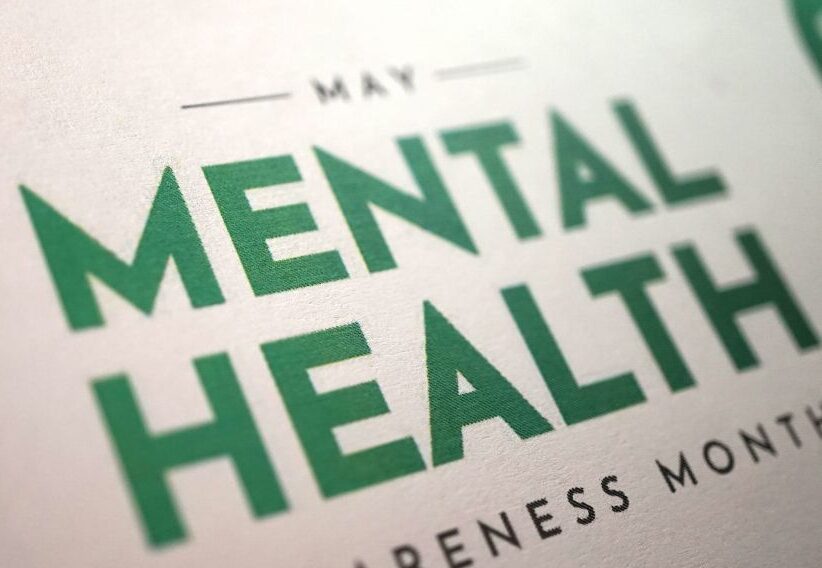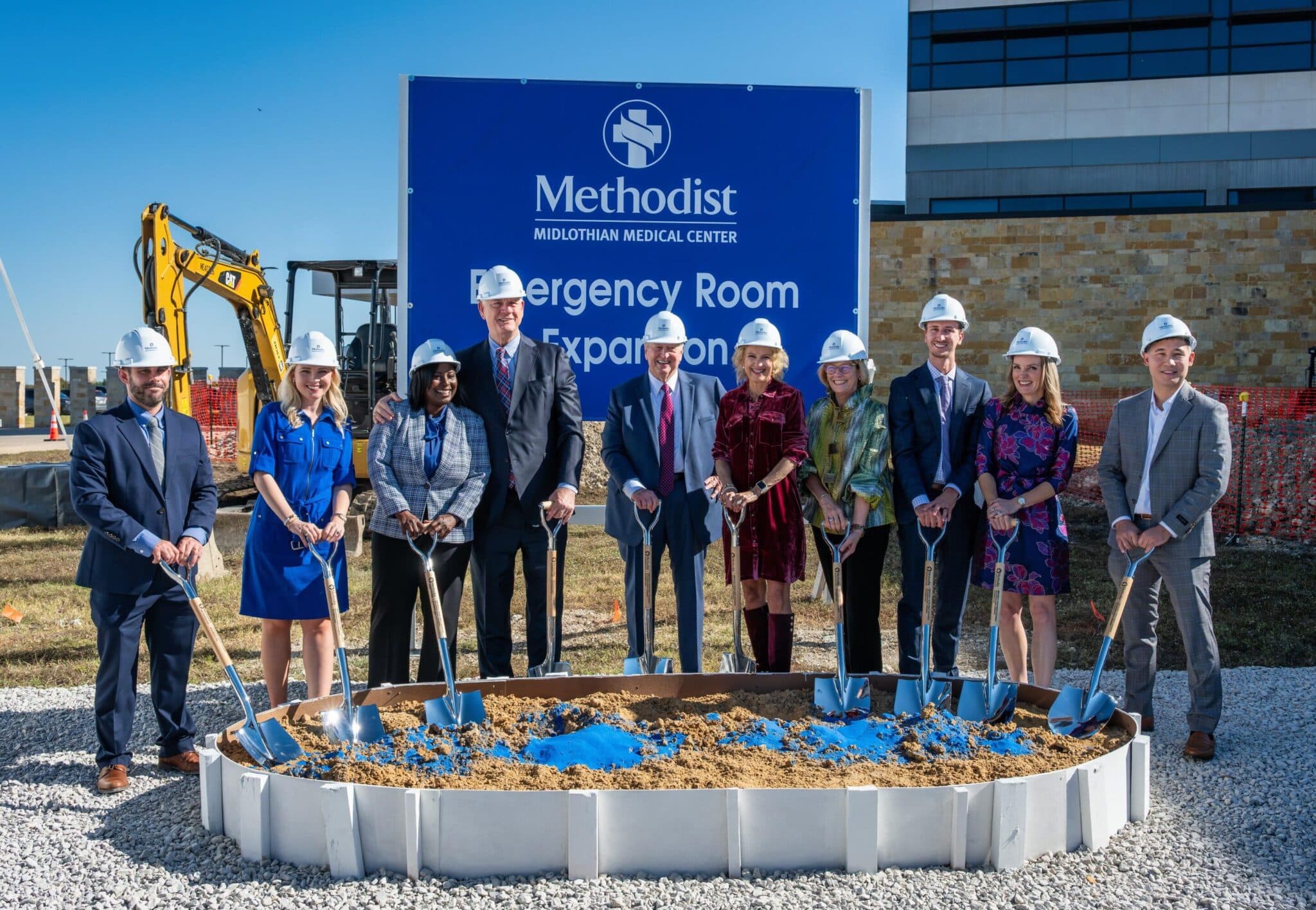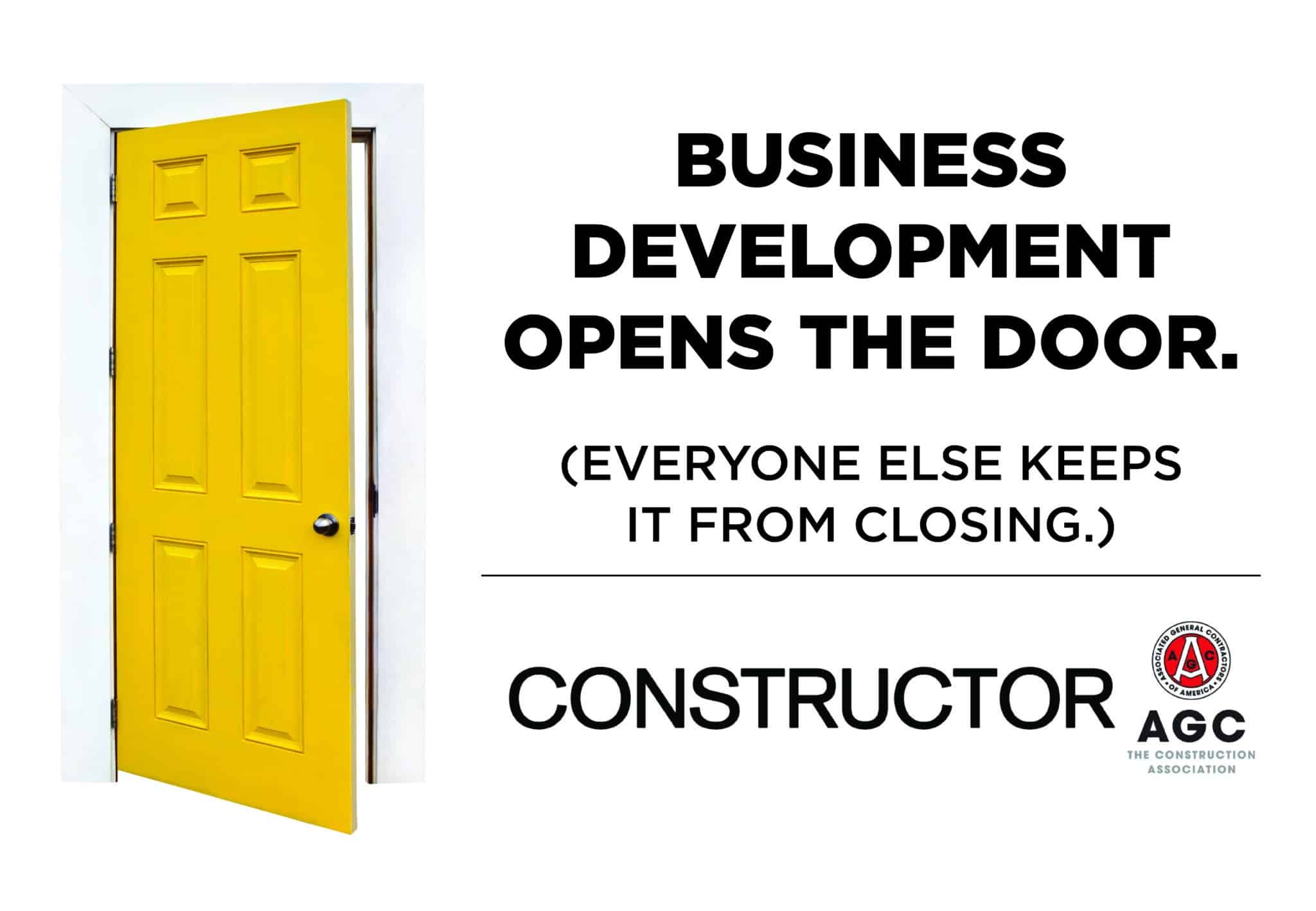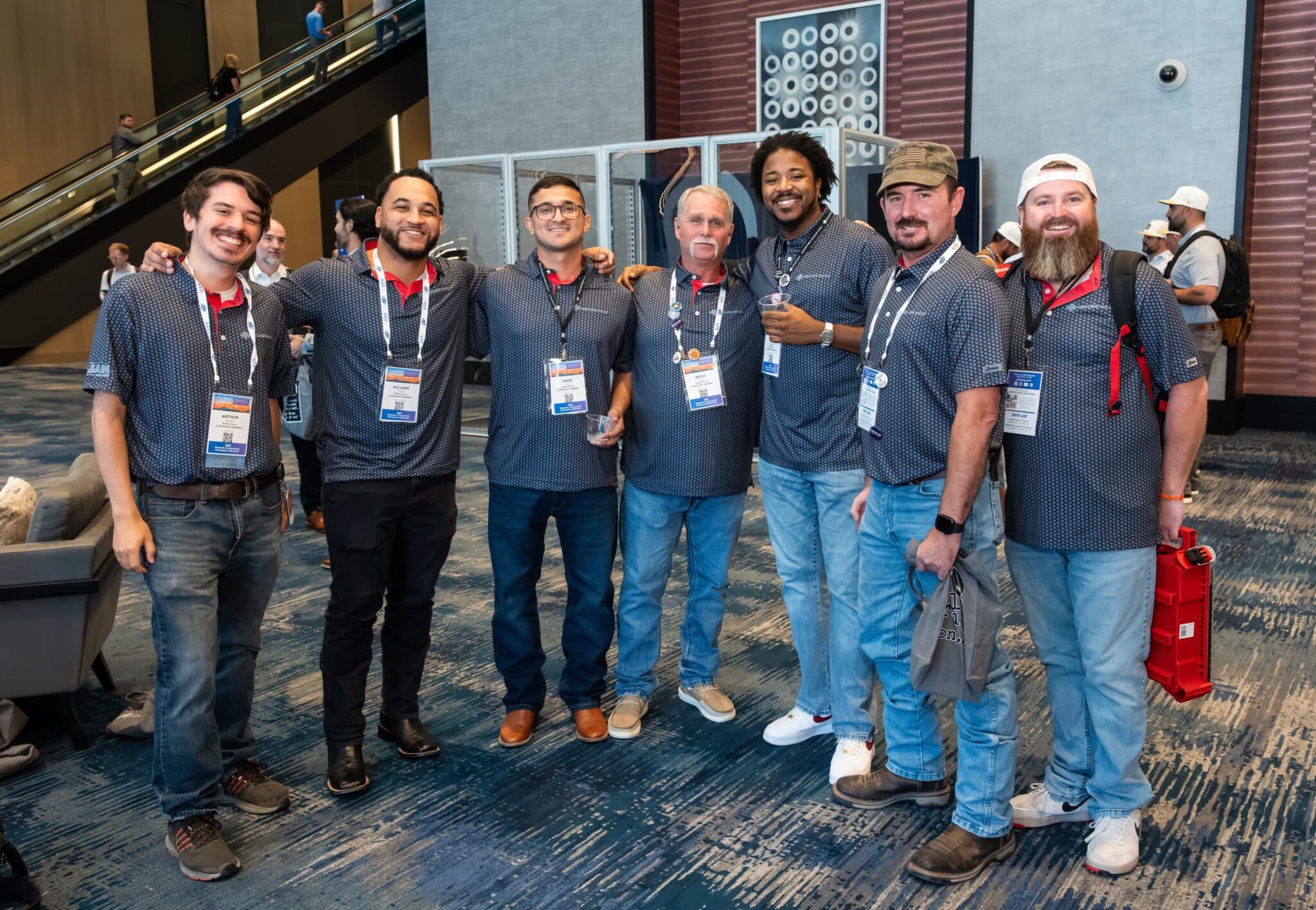When considering safety in construction, most firms think about OSHA’s Focus Four Hazards, the four leading hazards in the construction industry – falls, caught in or between, struck by, and electrocutions. Yet our industry has only recently begun the conversation around the fifth hazard, suicide. It is jarring for many to learn that the suicide rate in construction is about four times greater than the national average and five times greater than all other construction fatalities combined.
But why does construction have such a high suicide rate? Could our industry’s culture be contributing to this crisis? The construction industry is traditionally perceived as hypermasculine – rugged, manly, and competitive. It also consistently ranks at the top of all sectors for heavy alcohol and substance use or abuse. Long hours are typical. Sleep disruption or deprivation due to shift work is expected. Extended travel can lead to interpersonal stress and loneliness. Destabilizing events like seasonal layoffs or furloughs and the constant pressure to make schedules and budgets can lead to high anxiety or depression. And with all this, because of our tough guy culture, being asked to leave your issues “at the gate” is standard. The attitudes of many who express negative perspectives about mental health or those who struggle with it are prevalent as well. This stigma can perpetuate myths, lead to discrimination, create feelings of shame or embarrassment, and prevent people from getting better.
We must normalize language around mental health, bring these topics to the forefront, and participate in honest discussions about how we truly feel. If you hear these four myths about mental health on the job site, please do your part to reduce these stigmas.
Myth #1: Mental illnesses are rare.
Negative. In fact, it is pretty standard. According to the World Health Organization, one in four people will be affected by mental disorders at some point. Additionally, the National Institute of Mental Health estimates that in the United States, 1 in 5 adults experiences a mental illness each year.
Myth #2: If you try harder, you can make your symptoms go away.
Incorrect. The best treatment plan for an individual with a mental illness may include a combination of therapy, medication, and lifestyle changes.
Myth #3: Mental health care is for people with major problems.
Not true. Mental health care encompasses many services and treatments that can benefit individuals with mild and severe mental health concerns. It includes prevention, early intervention, and treatment for various mental health conditions, such as anxiety, depression, and trauma.
Myth #4: Mental health disorders signify weakness.
False. They are medical conditions that affect a person’s thoughts, feelings, and behaviors. These disorders can be caused by biological, genetic, environmental, and psychological factors. It is essential to understand that mental health disorders are not the person’s fault and are not a sign of weakness. Individuals can recover and manage their mental health condition with the proper treatment, support, and self-care.
Debunking these myths and normalizing discussions about mental health is vital for our industry to both survive and thrive. It’s time to change the perception and ensure that mental health is treated on par with physical health.
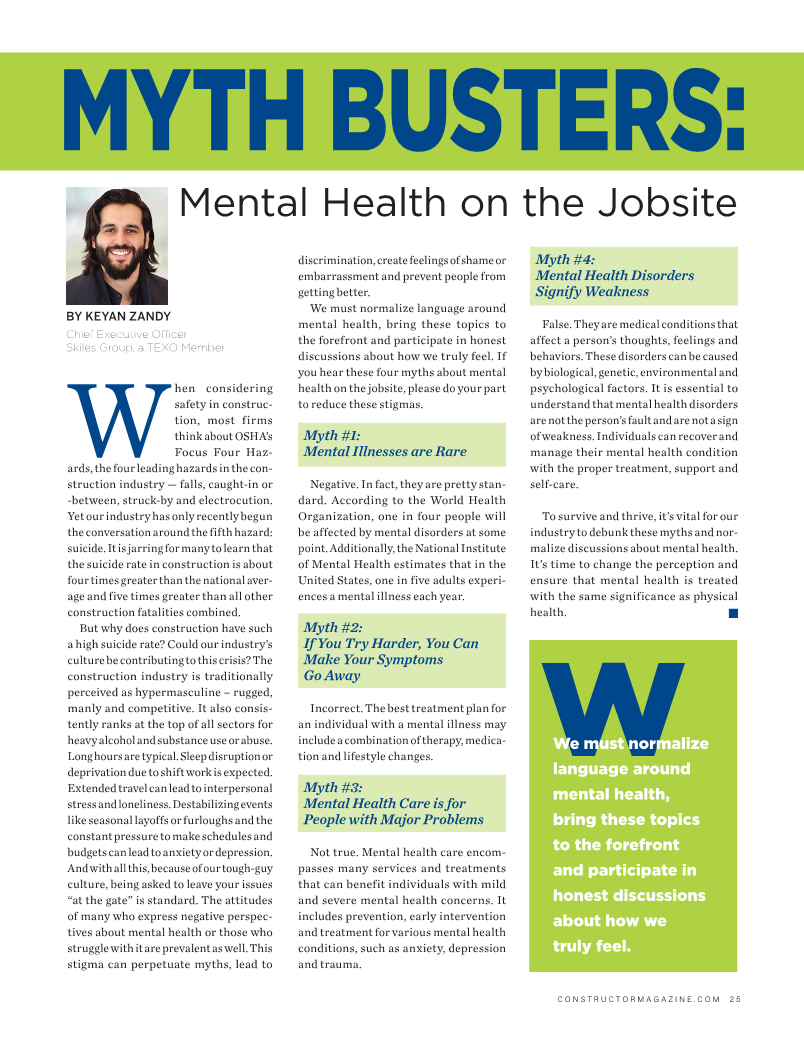
This article was written for Constructor Magazine’s March/April 2023 issue; you can read it here:
https://constructor-march-april.mydigitalpublication.com/publication/?m=69328&i=784422&p=24&ver=html5
